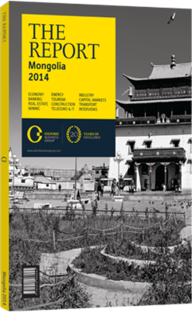The right mix: Livestock insurance blends commercial enterprise and public policy
The Mongolian Index-Based Livestock Insurance (IBLI) programme could greatly help the country. Given the harsh climate and the frequent cold winters – and given the fact that herders, which make up a significant part of the population in Mongolia, tend to live with little financial cushion – it is vital that a financial product exist that can act as a hedge when livestock dies. The challenge remains to get the structure right. It must be priced so that herders are compelled to buy it, while at the same time be financially viable enough so that the insurers keep offering and backing the product and so that the government does not get in fiscal difficultly backstopping the programme.
Many Attempts
The country started conducting a livestock census in 1918 and made livestock insurance for collectives compulsory in 1963. After 1995 and prior to the current IBLI, three livestock insurance programmes were initiated but failed. The IBLI itself was established in 2005 by the government and World Bank after the country faced major dzud (summer drought followed by an extremely cold winter) in 1999, 2000 and 2002. The programme was rolled out on a test basis in 2006 in three aimags (provinces): Bayankhongor, Uvs and Khentii. Under the IBLI, payouts are made to herders when mortality rates hit a certain percentage in a specific geographic location for a specific type of animal. The risk is layered and reinsured. The herder receives nothing and bears all the losses when the average death rate in the soum (town or village) is less than 6%. From 6-30%, the insurance companies provide an indemnity payment under Livestock Risk Insurance (LRI). Above 30%, the government comes in with its support. At first, this was done through the Disaster Response Product (DRP), backed by international donor support (including funds from Switzerland, Japan and Korea). The DRP was replaced ahead of the 2009/10 winter by Government Catastrophic Coverage (GCC), which changed the terms of the protection being offered and limited the exposure of the government to losses. The DRP was more of a social safety net, as it was available to all herders for all losses with the payment of a small fee. The GCC only includes animals insured under the LRI.
The programme has been seen as a great success.
In 2009 the programme was extended from 2011 to 2014 and was expanded to include all aimags (by 2012) rather than just the three involved in the pilot. By 2012 a total of 15,992 herder households were covered by the programme, up from 2422 in 2006. Livestock insured went from 292,219 to 2,462,267 and premiums collected grew from MNT107.7m ($64,620) to MNT1.5bn ($900,000). Five insurers have participated – Bodi, Mongol, Monre, Tenger and Practical – and international reinsurance companies also became involved. In 2010 France’s Scor started providing stop-loss coverage to local insurers, and in 2012 SwissRe reinsured a portion of the government’s risk under the programme.
Viability
While the structure is sensible and limits the potential losses for all the parties involved, overall the system appears to be in the red. In 2007, 2008 and 2009, the payments were such that the government reserve account was tapped out and the World Bank had to step in. Through 2011 more was paid out overall than was paid in premiums. Administratively, livestock insurance has proven costly. The insurers have found it expensive to sell the insurance, as agents have to cover great expanses of grassland to locate potential clients.
The donors spent an estimated $10m on the programme, not including the actual coverage of excess losses. To be properly judged, livestock insurance must be in place for a long period of time. Still, it is clear that livestock insurance will never stand as a completely commercial enterprise. Losses are going to have to be absorbed somewhere along the line - either as a matter of public policy by the government, as a gesture of goodwill on the part of the insurance firms or as aid from the donor community. The important part will be to get the balance right so that no party is forced to sustain losses so great that the programme becomes commercially unacceptable or fiscally dangerous.
You have reached the limit of premium articles you can view for free.
Choose from the options below to purchase print or digital editions of our Reports. You can also purchase a website subscription giving you unlimited access to all of our Reports online for 12 months.
If you have already purchased this Report or have a website subscription, please login to continue.

